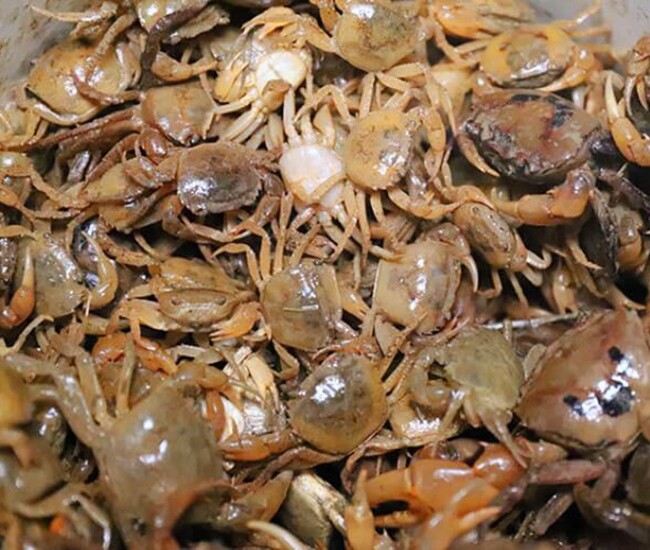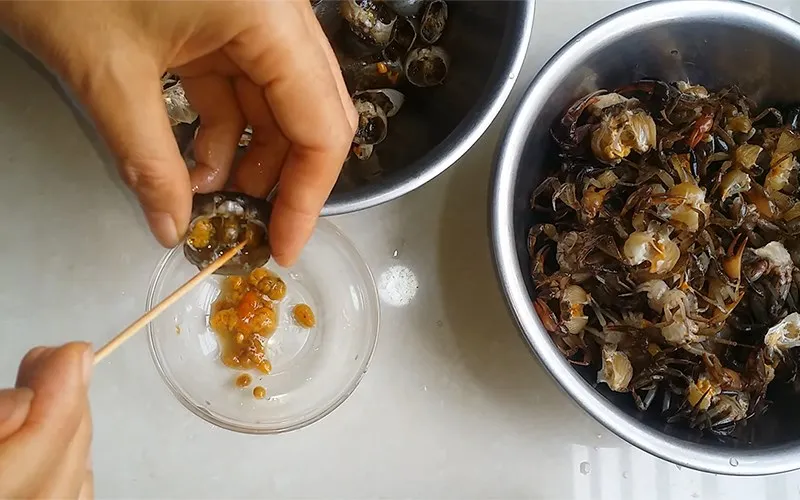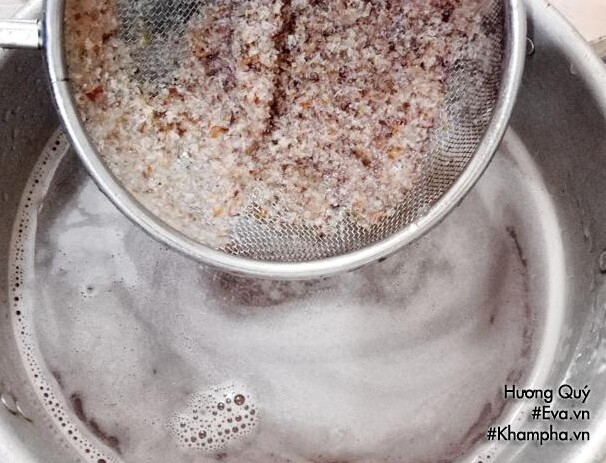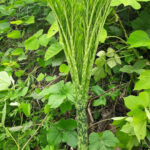To ensure the safe consumption of Cua đồng (field crabs), it is essential to follow proper preparation techniques. Firstly, when purchasing these crabs, it is advisable to opt for live and healthy ones, avoiding pre-killed or pre-ground options of uncertain origins. Prior to cooking, they should be thoroughly cleaned and specific parts such as the gills, lungs, and mouth should be removed as these tend to harbor parasites.
Additionally, to further enhance food safety, it is recommended to soak the crabs in a specific type of liquid; details of which can be found below.

Adhering to these preparation and cooking procedures not only enhances the flavor of the dish but also safeguards the health of your family. Therefore, it is imperative for home cooks to be meticulous and thorough when handling field crabs to ensure food safety.
So, what liquid should you soak the crabs in? Read on to find out:
1. Cleaning the Crabs
Upon purchasing field crabs, start by thoroughly rinsing them multiple times to remove any dirt or debris. Next, soak them in clean water for about 1-2 hours, allowing them to expel any remaining impurities. Subsequently, immerse the crabs in a mixture of water, salt, and a small amount of rice wine for approximately 10-15 minutes. This method not only aids in eliminating parasites such as worms but also helps “stun” the crabs, making them easier to handle during the subsequent steps.
2. Disassembling the Crabs
Gently hold the body of the crab along the edge of the shell, and carefully detach the gills, mouth, and lungs. A helpful tip is to remove the lungs first to prevent the crab from pinching. Avoid grasping the claws as they are sharp and may cause scratches. Instead, hold the smaller legs for a safer grip.

It is imperative to completely discard the gills, lungs, and mouth as these parts can contribute to an unpleasant odor, grit, and potential parasites.
3. Extracting the Roe
Using a toothpick or the tip of a chopstick, gently remove the roe (crab fat) from the inner surface of the shell. As the amount of roe is usually small, take care to preserve as much as possible during this process.

4. Grinding or Pounding the Crabs
Place the cleaned crab bodies in a grinder or food processor along with a teaspoon of salt. Alternatively, for a more traditional flavor, you may opt to manually pound the crabs, resulting in a more aromatic and fluffy texture.
5. Straining the Crab Mixture
This step is crucial and should be executed meticulously. Combine the ground crab mixture with approximately 1–1.5 liters of water, stirring well. Allow the mixture to settle, and then carefully scoop out the clear water from the top, passing it through a strainer to remove any remaining crab particles. Repeat the straining process multiple times until the crab water is completely clear and free of sediment.

6. Cooking the Crab Water
Pour the strained crab water into a pot and heat it over medium heat. As the water begins to simmer, gently stir to prevent the crab meat from sticking to the bottom of the pot and burning. Once the water reaches a boil, remove the lid, allowing the crab meat to float to the surface and form attractive clusters. Using a slotted spoon, gently lift the crab meat into a bowl, reserving the broth for cooking soup or crab hotpot, depending on your preference.
Underground Delicacies: A Tasty Trek from North to South Vietnam.
The humble root vegetable, often unassuming in appearance and with a tendency to cause an itchy throat, is a culinary delight that spans the length of Vietnam. From the north to the south, this underground specialty is a beloved treat, cherished for its unique flavor and versatility in local dishes.



































